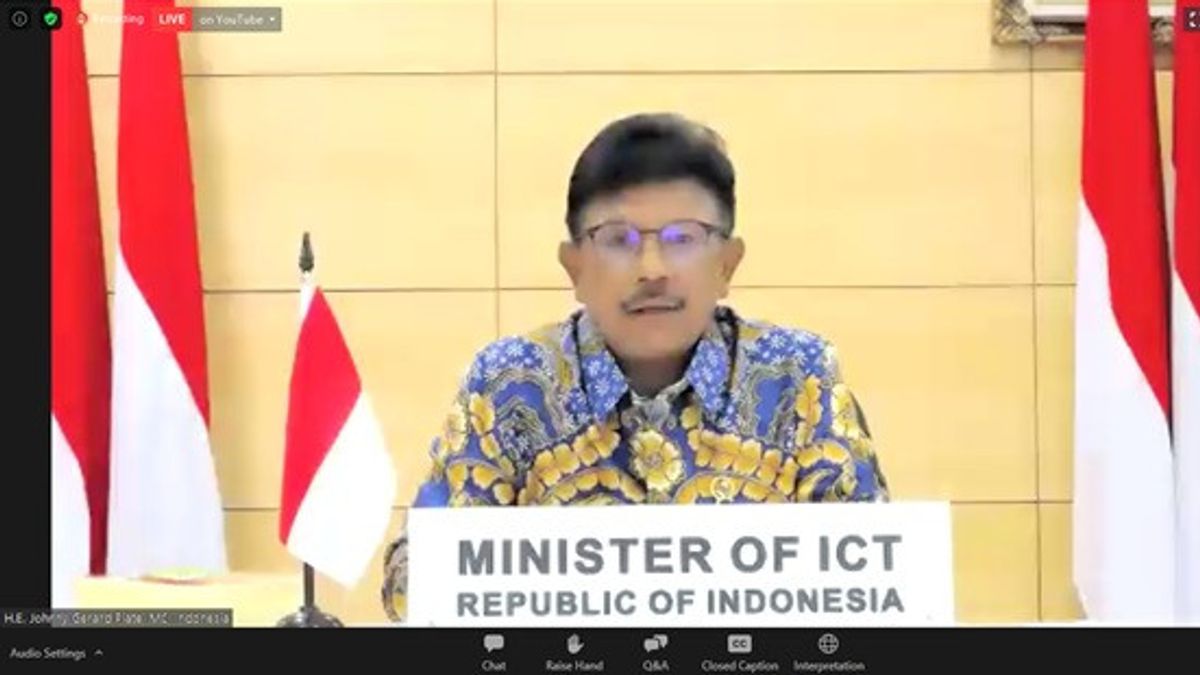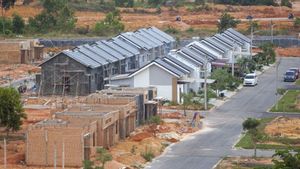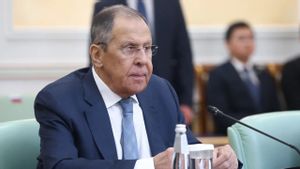JAKARTA - Minister of Communication and Informatics (Menkominfo) Johnny G Plate stated that the government will implement three funding schemes to build digital infrastructure. The funding target is to increase telecommunications connectivity and the digital divide.
"Not only will it help our economic recovery, but will also guide us on the path to becoming a resilient digital society," said the Minister of Communication and Information Johnny in The Leadership Dialogue of the International Telecommunication Union Regional Development Forum Asia and The Pacific Region (RDF-ASP 2020), Monday November 2nd.
"The pandemic has also exposed the inequality that exists in the digital domain, the challenges facing Indonesia and many other countries here," said the Minister of Communication and Information.
The three schemes implemented in Indonesia are the universal service obligation (USO), non-tax revenue from the ICT sector and the State Budget.
The Indonesian government is taking advantage of the corona virus pandemic as a momentum to accelerate digital transformation, through four strategies, namely strengthening digital infrastructure, adopting supporting technology, developing digital talent and forming the right laws to complement primary regulations.
"These strategies are interconnected and equally important in Indonesia's efforts to build digital infrastructure in Indonesia," said Johnny.
During the virtual meeting, Johnny also explained the strategy of using fiber optic and high-throughput satellites to enhance digital telecommunications networks. Indonesia has deployed more than 348,000 kilometers of fiber optic cable on land and sea, including 12,148 via the Palapa Ring.
"We connect cities with the deployment of fiber and microwave networks and use 5 national satellites and 4 leased foreign satellites. Indonesia has built more than 533,000 BTS to transmit cellular broadband networks to receivers," said Johnny.
The government is also committed to launching the high-throughput SATRIA-1 satellite in the third quarter of 2023, which will have a capacity of 150Gbps, three times the nine satellites in Indonesia's orbit.
"We hope this project can provide internet access at 150,000 public access points from a total of 501,000 public access points across the archipelago," said Johnny.
Of the 150.00 points, 93,900 for the education sector, 47,900 local public services and 7,600 to support other government services, including health. The satellite is expected to reduce blank spots, points that are not covered by cellular networks.
RDF-ASP 2020 is an international forum for ITU member countries and partners, held on 2-5 November 2020. Through this dialogue, it is hoped that it can provide direction for discussion and develop a regional digital blueprint for an inclusive and sustainable digital economy and society in Asia and the Pacific.
The English, Chinese, Japanese, Arabic, and French versions are automatically generated by the AI. So there may still be inaccuracies in translating, please always see Indonesian as our main language. (system supported by DigitalSiber.id)













